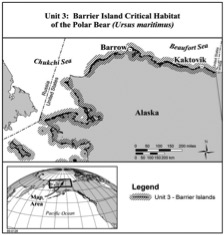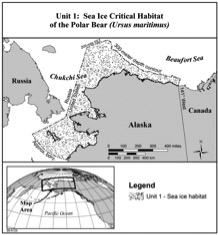By Taylor Rose Thompson
On February 29, 2016, the Ninth Circuit held lawful that the designation of 187,000 square miles along the northern coast of Alaska as critical habitat for polar bears by the U.S. Fish and Wildlife Service (“USFSW”).[1] The critical habitat for threatened polar bears in located on Alaska’s northern coast and includes marine waters. Polar bears are the first animal to be listed in the Endangered Species Act (“ESA”) as “threatened” due to climate change.


The State of Alaska and the Alaska Oil and Gas Association, a coalition of native groups and other oil and gas groups, sued USFWS after USFWS designated the land as critical habitat as part of its polar bear recovery plan. They argued that this designation was an “overreach.”
This decision came to the Ninth Circuit on appeal from a 2013 decision from the Alaska District Court invalidating the designation. The district court held that USFWS did not show that the land would be appropriate for polar bear habitat and rejected the plan in its entirety. The Ninth Circuit disagreed, and held that the designation of the land did not have to be proven habitat, but rather that the areas were “critical to the conservation of the species.” According to the court, the designation stands because USFWS used the best available science.
The holding is certainly a win, but the holding does draw some concerns over the potential consequences on future development in the Arctic. Currently, Alaska is facing serious budget issues. Not only is the price of oil significantly lower, offshore development of oil has all but halted A critical habitat designation of this size will impact federal approval of future offshore development. It is important to consider what the larger effects of a designation of this size can do to a resource dependent state such as Alaska. However, it is also important to protect a species as important to Alaska as the polar bear.
[1] Alaska Oil & Gas Association v. Jewell, No. 13-35619, ___ F.3d ___, 2016 U.S. App. LEXIS 3624, 2016 WL 766855 (9th Cir. Feb. 29, 2016).
